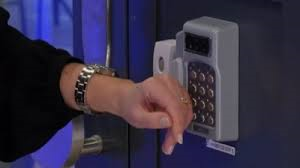How emerging technology could revolutionise access control

21 December 2018
How emerging technology could revolutionise
access control
These days, we’re
surrounded by the kind of technology that, at one point, wouldn’t have seemed
out of place in a science-fiction film. From the Internet of Things (IoT) to
artificial intelligence (AI), modern technology is increasingly put to work to
make daily tasks quicker, more automated and more convenient.
The same is true of the
technology that powers premises security but, where access control is
concerned, it’s vital that any boost in efficiency doesn’t equate to
compromised system integrity.
Technological advancements for the access control
industry must combine innovation with the highest standards of security, as we
explore here.
Micro-chipping

Although it’s a
concept viewed by many as more than a little controversial, the future of
access control could see businesses ask their employees to become their own
means of security clearance – via a human microchip. A tiny microchip implanted
into the hand could enable team members to enter buildings or areas of premises
they need access to with just a wave of the hand, to complete cashless
transactions or unlock office devices.
Microchipping could
certainly get around the issue of lost key cards, and could have implications
for tracking employee whereabouts and even health data, but it could be a while
before the majority of employees are happy to swap using their fingerprint
or ID badge for such an invasive form of access clearance.
Artificially-intelligent security
assistants
Many of us are used to
asking ‘Alexa’ or ‘Google’ to play our favourite music or dim the lights, but
could these devices have a role to play in the future of access control? If, as
some predict, an AI-powered virtual assistant could one day take on the
responsibilities of a receptionist or night manager, it could fall to these
devices to carry out the automated management of connected systems, such as CCTV cameras,
air conditioning and door locks, after extensive programming and testing of
course.
Facial recognition and crowd mapping
Tomorrow’s security
cameras may be capable of more than simply recording what is in front of them. By
analysing huge datasets of human faces, AI can give cameras the ability to
‘learn’ to identify one person from another, which means CCTV cameras could
eventually be programmed to automatically create an alert, or even restrict
building access, if they spot someone previously flagged as suspicious.
There’s
huge scope here for ID verification and improved incident reporting too.
Conversely, some
cameras can mask identity; turning people captured on a feed into anonymous moving
dots. This not only negates the potentially problematic issue of identity tracking
but allows businesses to visualise patterns in the flow of a crowd through a
physical space, hugely valuable for organisations that need to keep large
numbers of people moving steadily from area to area, such as airports.
Whatever the future brings, existing access control technology is already enabling
organisations to achieve and maintain physical internal and external security,
manage the movement of personnel and visitors, and save precious time and
resources that would have previously been lost doing this manually. Our access
control systems combine proven security hardware with agile,
fully-integrated management software to ensure your business is exactly as
accessible as you need it to be, now and in the future. Talk to us
today to find out more.
1.0.0.20